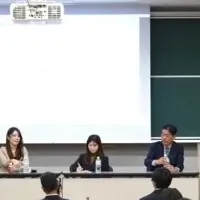
Brett Martin's Innovative Materials Help Data Centers Achieve 97% Carbon Savings
Brett Martin Pioneers Low Carbon Solutions for Data Centers
In a significant stride towards sustainability, Brett Martin has unveiled its groundbreaking low embodied carbon materials that promise up to a 97% reduction in carbon footprint for data centers. These innovative materials, particularly noteworthy for aisle containment systems, offer a much-needed solution to the growing environmental concerns associated with data center operations.
The Role of Low Carbon Materials
Brett Martin's new offerings stem from advanced polymer technology, designed to enhance energy efficiency within the most crucial areas of data centers: the hot aisle and cold aisle containment. One of the essential components of these systems are the polycarbonate sheets used in doors, roofs, and chimney panels, which facilitate the segregation of various data zones. By adopting Brett Martin's low carbon solutions, data centers can not only provide an optimal environment for their servers but also achieve significant cost savings on energy for cooling.
A Leap in Sustainability
Brett Martin stands as a leader in the manufacturing of polymer-based sheets, and its newly developed Marlon BioPlus panels exemplify the power of sustainability in construction materials. Crafted from bio-circular materials, these panels offer a climate-neutral alternative that drastically cuts down carbon emissions. Compared to traditional polycarbonate panels, Marlon ST BioPlus achieves an impressive Life Cycle Assessment (LCA) A1-3 carbon saving of 97%, translating into a reduction of between 200 to 500 tonnes of embodied carbon for typical new data center builds.
The leap in savings comes from a crucial change in sourcing: the company uses sustainably-sourced feedstocks rather than fossil-derived alternatives and employs renewable energy throughout its manufacturing processes. This level of commitment is substantiated by certifications from the International Sustainability and Carbon Certification (ISCC Plus), ensuring that clients can trust in the supply chain's integrity.
Expert Insights
According to Robin Black, Head of Strategic Development at Brett Martin, while sustainable energy practices are being integrated into data centers, it becomes paramount to tackle embodied carbon in building designs comprehensively. He articulates that many developers aim for net-zero operational emissions, placing scope 3 emissions at the forefront of their sustainability challenges.
Black emphasizes, “Brett Martin's low embodied carbon polycarbonate sheets offer substantial savings when juxtaposed with standard options, giving developers the confidence to reduce their scope 3 emissions with our verified LCA data.”
The Future of Building Regulations
With upcoming building regulations expected to prioritize climate action, particularly with the next LEED update focusing on decarbonization, informed decision-making surrounding the carbon footprint of not just the building frameworks but also the structural fittings will prove vital. This promise of sustainability is the cornerstone of Brett Martin's strategic outlook as it enables clients to meet or even exceed their existing environmental targets.
The company brings over 65 years of experience in polymer production to the table, boasting a robust distribution network that spans 70 countries. Additionally, Brett Martin has made considerable investments in sustainable energy initiatives at its Mallusk extrusion facility, including the installation of a towering 2.3MWp wind turbine and a solar farm yielding 6.42MWb of energy — a testament to its serious commitment to a greener future.
In conclusion, as the data center industry continues to grapple with its environmental impact, the introduction of Brett Martin's low embodied carbon materials represents a crucial step towards a more sustainable operational model. Not only do these materials facilitate reduced carbon emissions, but they also support data center managers in their quest for greater efficiency and sustainable practices.
Topics Other)










【About Using Articles】
You can freely use the title and article content by linking to the page where the article is posted.
※ Images cannot be used.
【About Links】
Links are free to use.